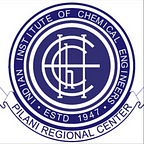Interview with Prof. Smita Raghuvanshi
Prof. Smita Raghuvanshi has been working in the area of biochemical and environmental engineering. Our research team at IIChE BITS Pilani chapter had a discussion with her on her research work.
Milestones and Motivation
I was involved in the removal of volatile organic compounds (VOCs) around 2005–06. I worked with a very inspiring professor during my PhD. With his guidance, I took up Environmental Engineering. Later on as I understood more of the hands-on aspects of the microbial culture and acquired lab skills along with my PhD, my interest grew into biochemical and environmental engineering. So I’ll say that my PhD was a turning point for my interest in this particular area, and then I got very motivated, very bright students to take my work further. I owe this to my own Ph.D., my Ph.D. supervisor, and very humbly, my own hard work.
And I appreciate environment more in a technical sense. That is one of the biggest learning which I have had over a period of time. If we generalize the environment then the appreciation is lost. Both in terms of lab development and simulation, this field is here to stay and chemical engineers have a huge role to play. Waste can be processed without producing any secondary or tertiary pollutants. This has merged bio and chemical engineering.
Current Projects
Apart from chemical and environmental engineering, I’m working on LCA (lifecycle assessment) or various processes using Umberto Next.
First phase of work started with carbon dioxide mitigation utilizing bacterial route. We take CO2 in gaseous phase and capture and utilize it. Mainly, we are targeting cement industry (major contributor of CO2) using bacterial route to create value added products. We did a lot of analysis with respect to characterisation using tools such as Fourier, FTIR and gas chromatography mass spectroscopy.
So basically, we’re working on flue gases mitigation using bacterial route. And here our objective is also to take first degree students who bring in lot of engineering aspects. How will the reactors be functioning? Is it going to be a biofilter or submerged reactor? How it could handle different concentration of flue gases? What will be the flow rate? What are the challenges? How will the nutrient work if there are more than three gases like CO2, SOx, NOx ? These questions come into picture. Two Ph.D. students and a lot of undergraduate and dissertation students are working with me.
On Surge of PPEs
Intriguing thought! I did not think at all with that thought process, but I appreciate the thought. Plastics can be degraded by microbes. There are microbial degradation of plastic. There is a term “bioplastic”. This needs to be explored further. We must approach it scientifically. There is definitely a biochemical way in which we can use bacteria to transform it into less harmful products. It is a research idea. Maybe students can take it up as a study project.
Challenges in the Journey
First thing is that we need to keep ourselves motivated. There are times when equipments or reactors fail. Then the students get demotivated too. Enthusiastic students are a great help in such times. There are external funding agencies and one can submit the research proposals and get the funded project. The challenges need to be overcome by continuous learnings and working and finding ways where in you can discuss and collaborate for work part. It can also be a simple discussion with a colleague or students as well.
Advice to Students and Expectations from them
All CDCs are important. Then of course there is a disciplinary elective on biochemical engineering. All of these are more than enough to generate interest. If you do a dedicated SOP, LOP in this area, there are professors working in this area in our department. I have offered a project in the area of process development for bio mitigation of flue gases using bacterial route. I also give projects based on Life Cycle engineering of different processes. I expect motivated students especially for the first interaction. Second, they should be able to read a lot. A lot of paper reading comes with a lot of discussion, readiness for presentation, readiness to work in the labs. But first thing is that they’re motivated and open minded to venture into these areas.
Being a Female Researcher
Yes, it is challenging. But in our Institute, I did not face any difficulties. However, As a woman you have to put in hours of work every time. In our department, it is excellent as our HOD, Prof. Mohanta is very open-minded and inspiring. I always try to maintain the ratio while forming team for group work. For your generation, I would advise- “ Be courteous and be motivated.”
